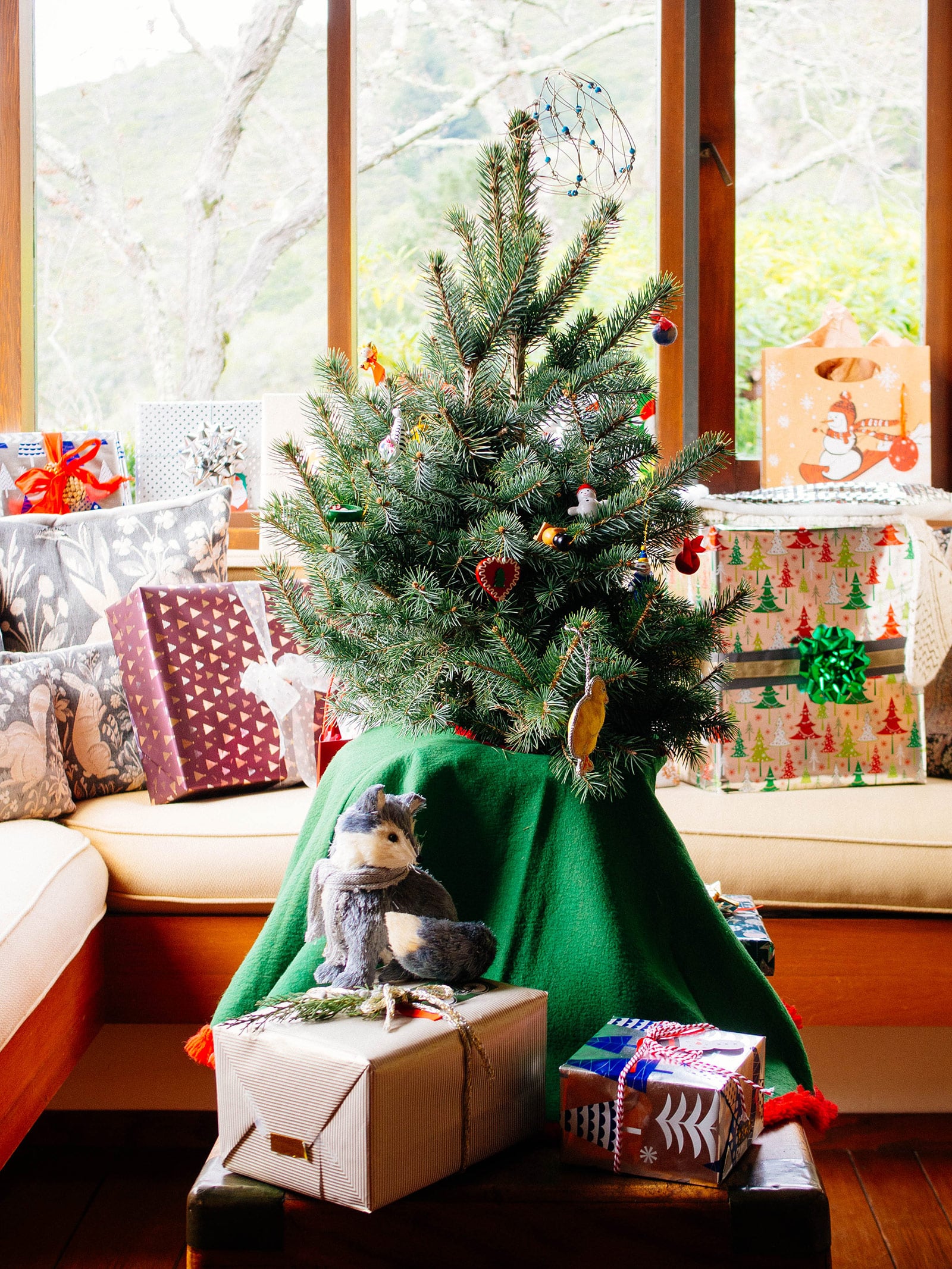If you like the idea of getting a live, potted Christmas tree for the holidays this year,
With the right care, you’ll be able to enjoy the look and scent of a real conifer tree as part of your holiday decor and then plant it in your yard so it can grow wild and beautiful (and bring back wonderful holiday memories every time you see it).
But before you head out to find that perfect living Christmas tree, know what to expect (and what mistakes to avoid) so your tree has the best chances of surviving Christmas indoors and the New Year outdoors.
Disclosure: If you shop from my article or make a purchase through one of my links, I may receive commissions on some of the products I recommend.
Where to buy
Living Christmas trees
Start with the right species
Conifers come in all shapes, sizes, and species, and some Christmas trees even grow in the warm, sunny climate of Southern California. But unlike a Christmas tree you might buy from a seasonal tree lot, what works inside your home may not be the best choice outside.
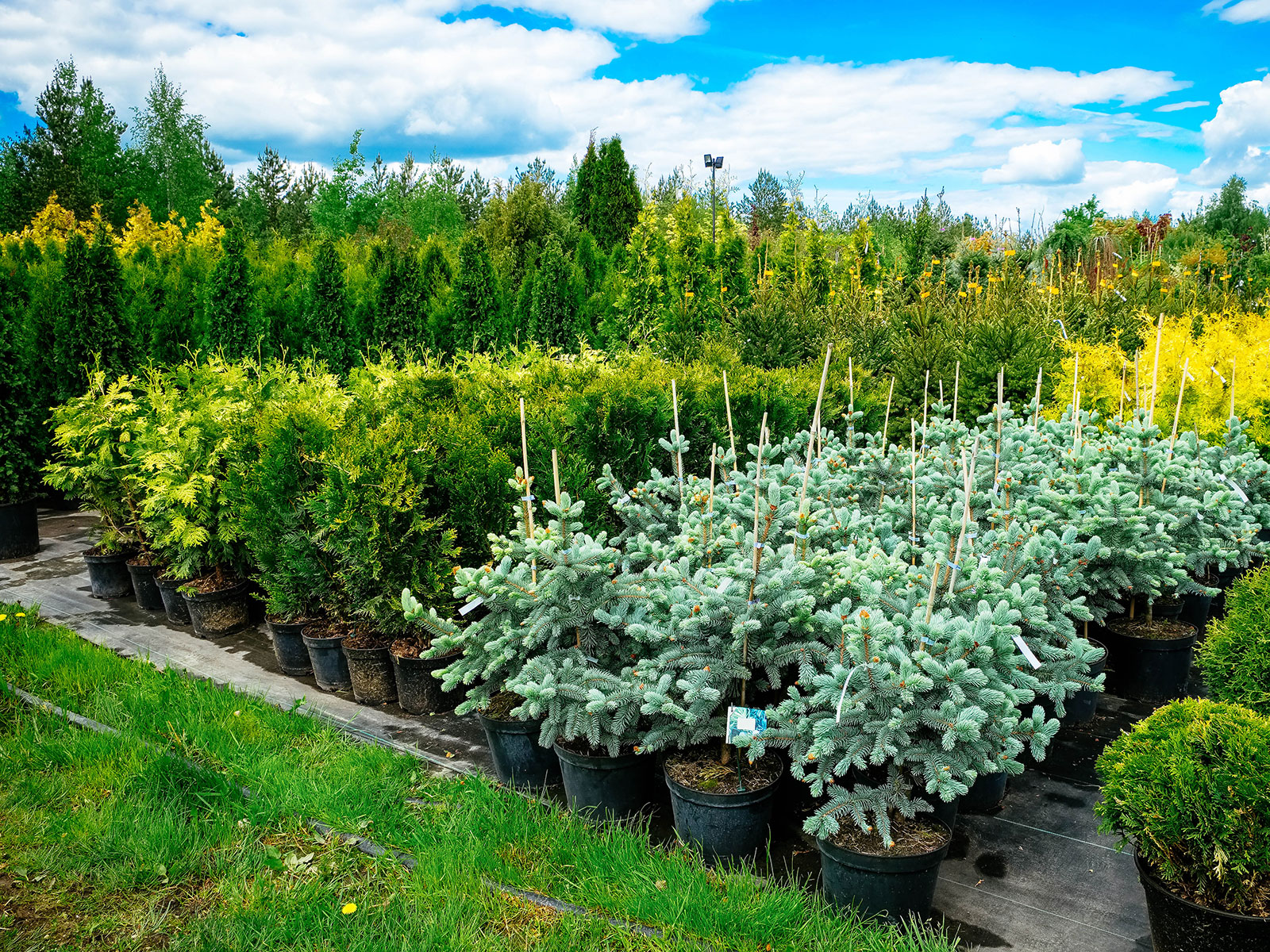
Your USDA hardiness zone will determine what type of tree will do well in your yard. You’ll also want to consider the final size of the tree; can your yard handle a mature conifer in 10 to 20 years?
To help you narrow down your list of conifers, here are some common species you can typically find locally:
- Fraser fir (Abies fraseri): This holiday favorite is native to the Appalachian mountains. It’s quite hardy and can be planted outside in zones 4 to 7.
- Balsam fir (Abies balsamea): A very close cousin of the Fraser fir, this is a popular species due to its divine pine scent. It likes cool temperatures and does well in zones 3 to 5.
- Douglas fir (Pseudotsuga menziesii): Soft needles that don’t tend to drop easily. This one is native to western North America, thriving in warm summers but cool winters. Zones 4 through 6 should work well.
- Norway spruce (Picea abies): A European species that’s big in the US, especially for public spaces. The Rockefeller Center Christmas Tree is usually a Norway spruce! These hardy trees do well in zones 2 to 7.
- White pine (Pinus strobus): If you prefer a fluffier look on your tree, this one’s for you. After the holidays, it’ll be able to survive in zones 3 to 8.
- Alberta spruce (Picea glauca): You won’t see many full-sized specimens of Alberta spruce sold as Christmas trees, but they’re a big favorite for those who prefer a tabletop version. These will do well in zones 2 through 8.
- Scotch pine (Pinus sylvestris): Hardy and with strong, rigid branches, this one will do thrive best in gardens in zones 2 to 7.
- Colorado blue spruce (Picea pungens): Its nice blue-green color makes this a big favorite. It should work in zones 2 through 7. (This is also one of my top picks for planting afterward if you want a fast-growing tree for privacy.)
- Norfolk Island pine (Araucaria heterophylla): Usually widely available during the holidays, Norfolk Island pines are sold as houseplants and they’re one of the few conifers that don’t mind living indoors (at least for a few years). This is a tropical species that’s hardy to zones 10 to 11.
Quick tip
Buy your potted Christmas tree at a local nursery or from a trusted online vendor, rather than going to a big box store. The higher-quality and healthier the tree, the more likely it’ll thrive after you plant it outside.
Conifer vs. non-conifer Christmas trees
Aside from the traditional conifers listed above, there’s another type of potted Christmas tree you’re likely to come across: the non-conifer variety. These unconventional evergreen shrubs can often be pruned into a conical shape and include holly, dwarf boxwood, and even rosemary.
That’s right, a pruned rosemary bush is an excellent stand-in for those looking for a mini Christmas tree! (Particularly as a tabletop decoration.) It might not smell like pine, but the scent is wonderful regardless. (The smell of rosemary is also believed to make you smarter and more alert.)
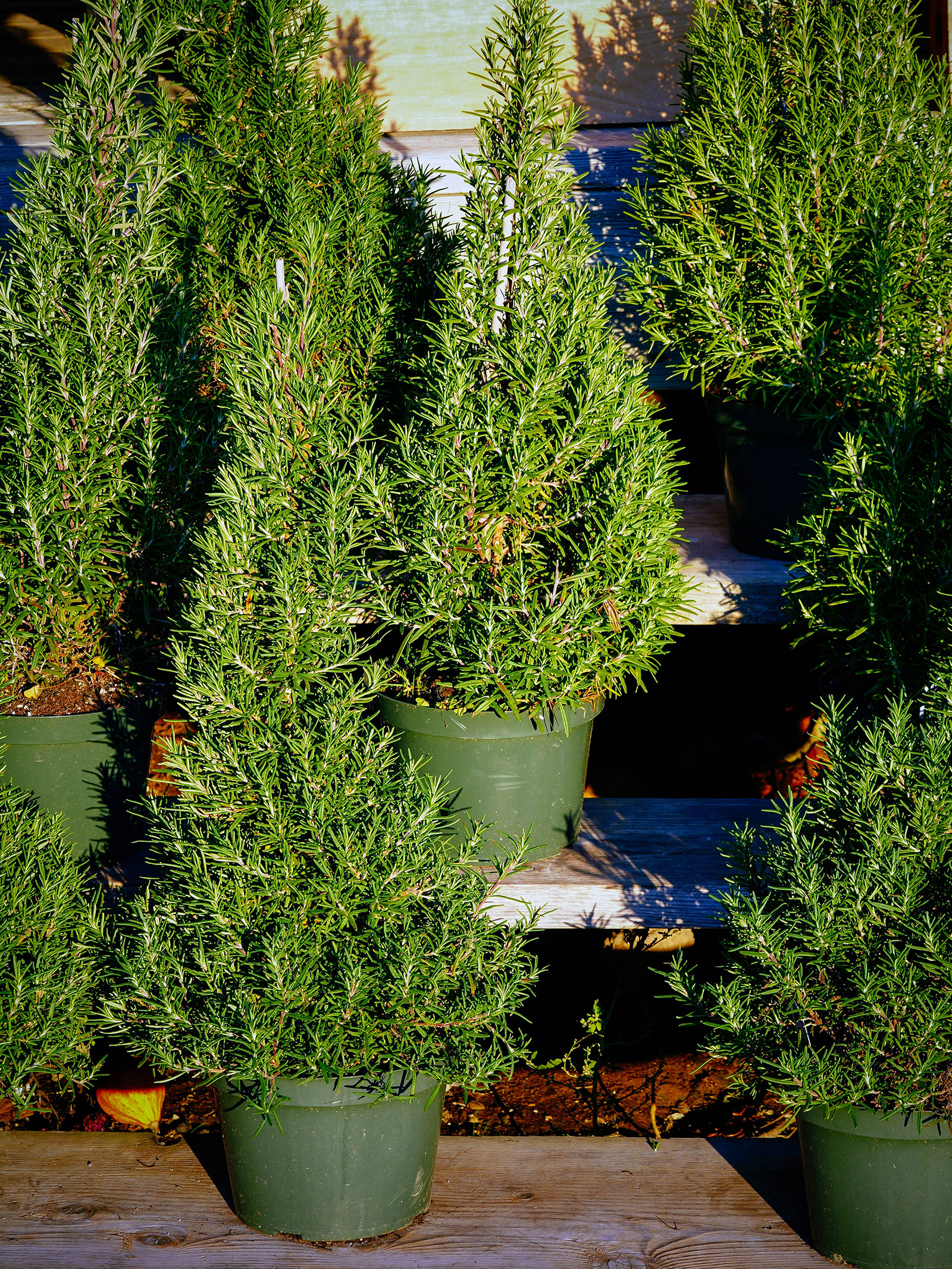
Often found for sale in supermarkets around the holidays (right next to the poinsettias, amaryllis, and other holiday plants), rosemary is a good choice for warmer climates, since it can thrive in zones 7 to 10 and grows easily once planted outdoors.
Ball and burlap vs. potted trees
Living Christmas trees are typically sold as ball and burlap (B&B) or container-grown trees. B&B means the trees were grown in a field, then dug up and their roots wrapped in burlap for transport.
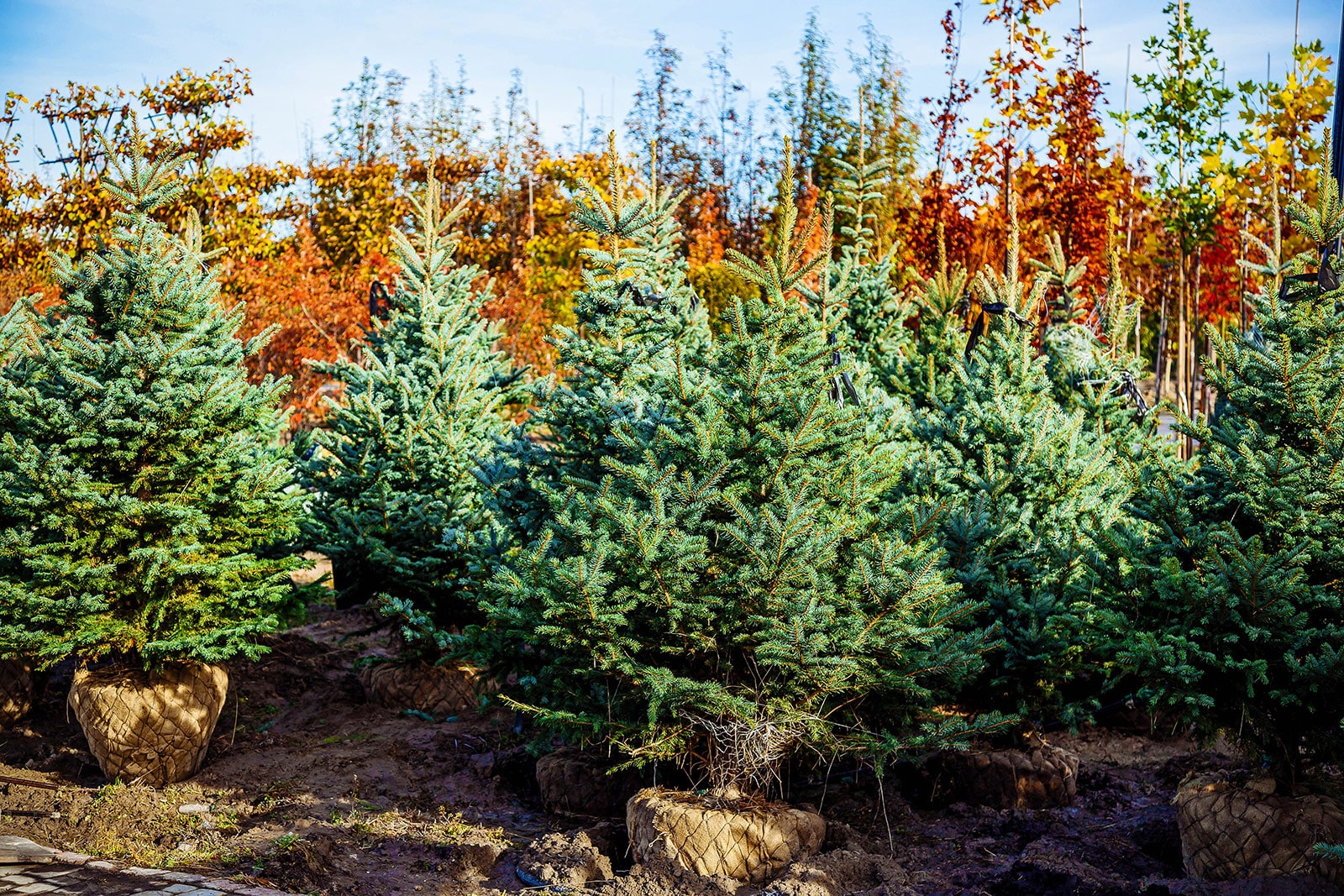
Container-grown trees, on the other hand, have spent their whole lives in pots. You’ll find younger tabletop-sized trees in this category as well as larger trees that reach 5 feet tall or more.
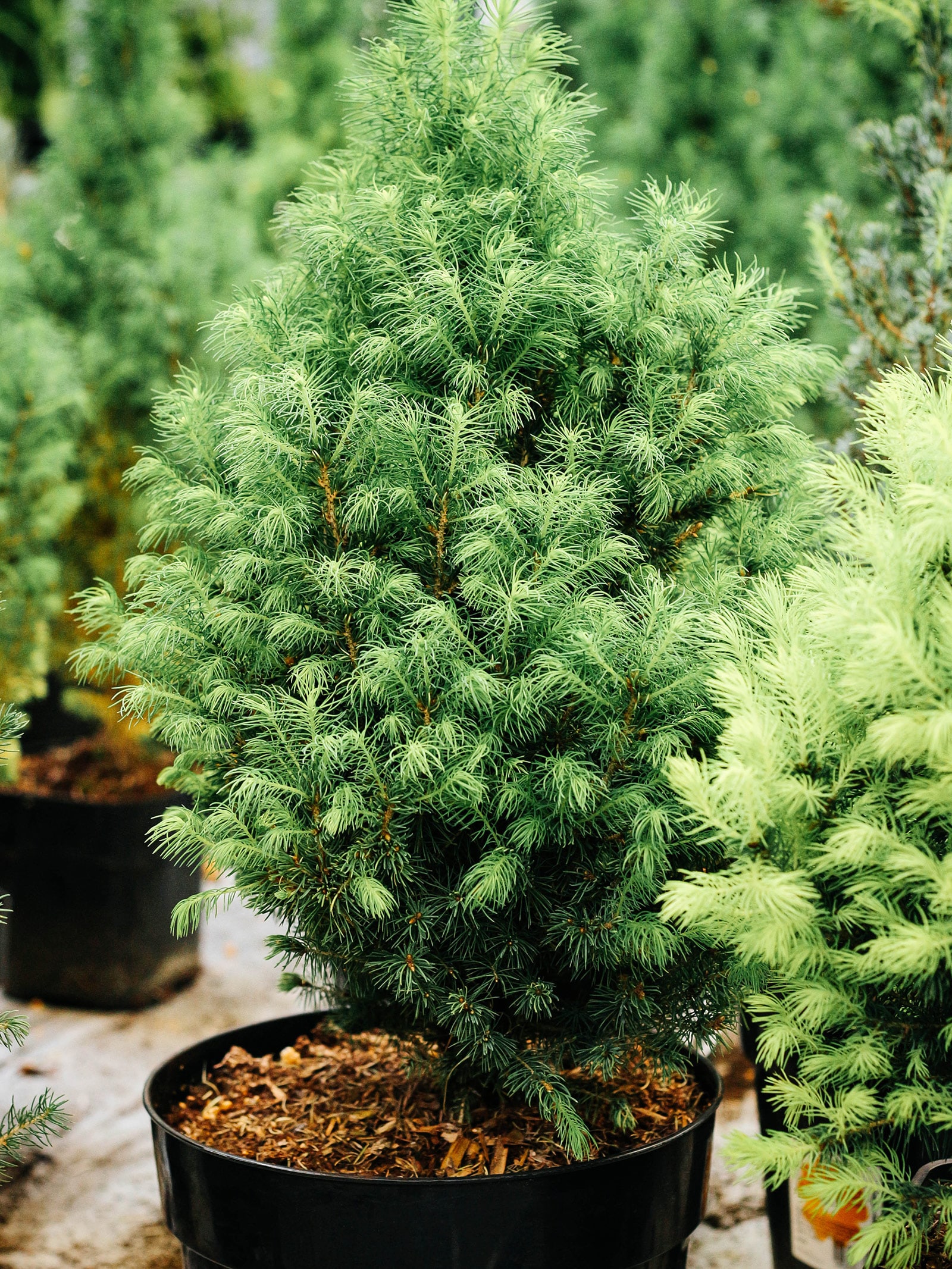

Each has advantages and disadvantages to consider:
B&B trees
- Grown in native soil, so they’re heavier to transport
- Roots are cut when dug, so trees may suffer transplant shock
- Soil dries out more slowly
Potted trees
- Grown in potting mixes, so they’re lighter and easier to bring home
- Roots remain intact, but trees may become rootbound
- Soil dries out more quickly
Caring for a potted Christmas tree
Once you bring your living Christmas tree home, the goal is to keep it alive until after the New Year. Spending a few weeks inside is not exactly something these conifers like, so you’ll want to take good care of your tree to make its temporary stay in your house (and its eventual transition outside) a smooth one.
Related: How to make a Christmas tree last longer and keep it alive through the New Year
The trick is to think of your tree as a (really large) houseplant in terms of giving it enough water and light.
Don’t make this mistake!
Potted Christmas trees should be kept indoors for no more than two weeks (and ideally much less). These living trees can’t tolerate the warm and dry conditions of our homes for too long, and are happiest in a cool, sheltered spot outside. So wait as long as possible before bringing yours home!
Acclimate your potted tree
After purchase, keep your potted tree outdoors for as long as possible. I know, it’s a bit anti-climactic if the big Christmas tree hunt is a beloved family tradition, but the reality is that they just don’t like being in our warm and dry homes.
It’s a good idea to make the time your tree has to spend indoors as short as possible by not bringing it inside until a week or two before Christmas. (That means no day-after-Thanksgiving tree shopping!)
Once you bring your living tree home, an acclimation period of about a week in a garage or other cool indoor spot helps make the transition from outdoors to indoors less hard on the plant. If you lack a suitable space, keep your potted tree in a sheltered area outside (like a covered porch or patio).
Provide enough light
Your potted tree will appreciate being placed near a window. Like most trees, it needs plenty of light, so opt for a south-facing window or the brightest spot in your house.
Dial down the temperature
Christmas trees like things cool, which is obviously not really an option during their time indoors. If your home has any chilly or drafty areas, that would be great, but otherwise, just try to keep your tree away from heaters and fireplaces.
Don’t overwater
It can be a bit tricky to achieve the right watering balance for a potted Christmas tree, but your best bet is to treat it like a regular houseplant.
Don’t overdo it, because your tree has gone through a lot and wet soil can lead to rot. Just keep the soil lightly moist. To gauge if your tree needs to be watered, stick your finger in the soil. If the top 2 inches of soil feel dry, give it a good watering until excess water drains out the bottom.
You can also lift the pot to check how heavy it is; if the pot feels lighter compared to the last time you watered, it’s time to water again. I like to check my potted tree daily while it’s inside, as it can dry out surprisingly quickly (especially if it’s in a smaller pot).
Planting your tree after the holidays
Happy New Year! Once the holidays are over and your tree has done its decorative duty, it’s time to prepare it for being planted outdoors.
You can start by freeing it of its ornaments and placing it back in the garage to help transition it back to cooler temperatures. If you have a greenhouse, that would be a great temporary spot too.
After this, your tree can go in a sheltered (but not dark!) outdoor location for a bit, preferably until spring has sprung or at least until the ground has thawed. Keep an eye on the soil moisture level during this time and water as needed.
Once the soil is thawed and workable, you’re ready to plant. Choose a sunny, well-draining spot in your yard where a nice evergreen tree can happily grow to full size without encroaching on a vegetable garden, damaging structures, or blocking views.
Dig a hole about two to three times as wide as the root ball, and no deeper than the height of the root ball. If you have particularly dense, heavy soil, dig a hole up to four times as wide.
Quick tip
You do not need to amend the soil or add any fertilizer. Doing so could stunt the development of your tree, as its roots may get used to the amended soil and refuse to grow beyond it into the native soil.
This advice may seem contrary to what you’ve typically heard about planting trees, but new research over the last decade has found that trees grow best in native soil. If you want to improve your soil, simply add a layer of aged compost over the soil each year as a side dressing for your tree.
Center your tree in the hole, backfill with soil, and water it in well. Stake if the tree seems a bit wobbly due to its small root system. That’s it!
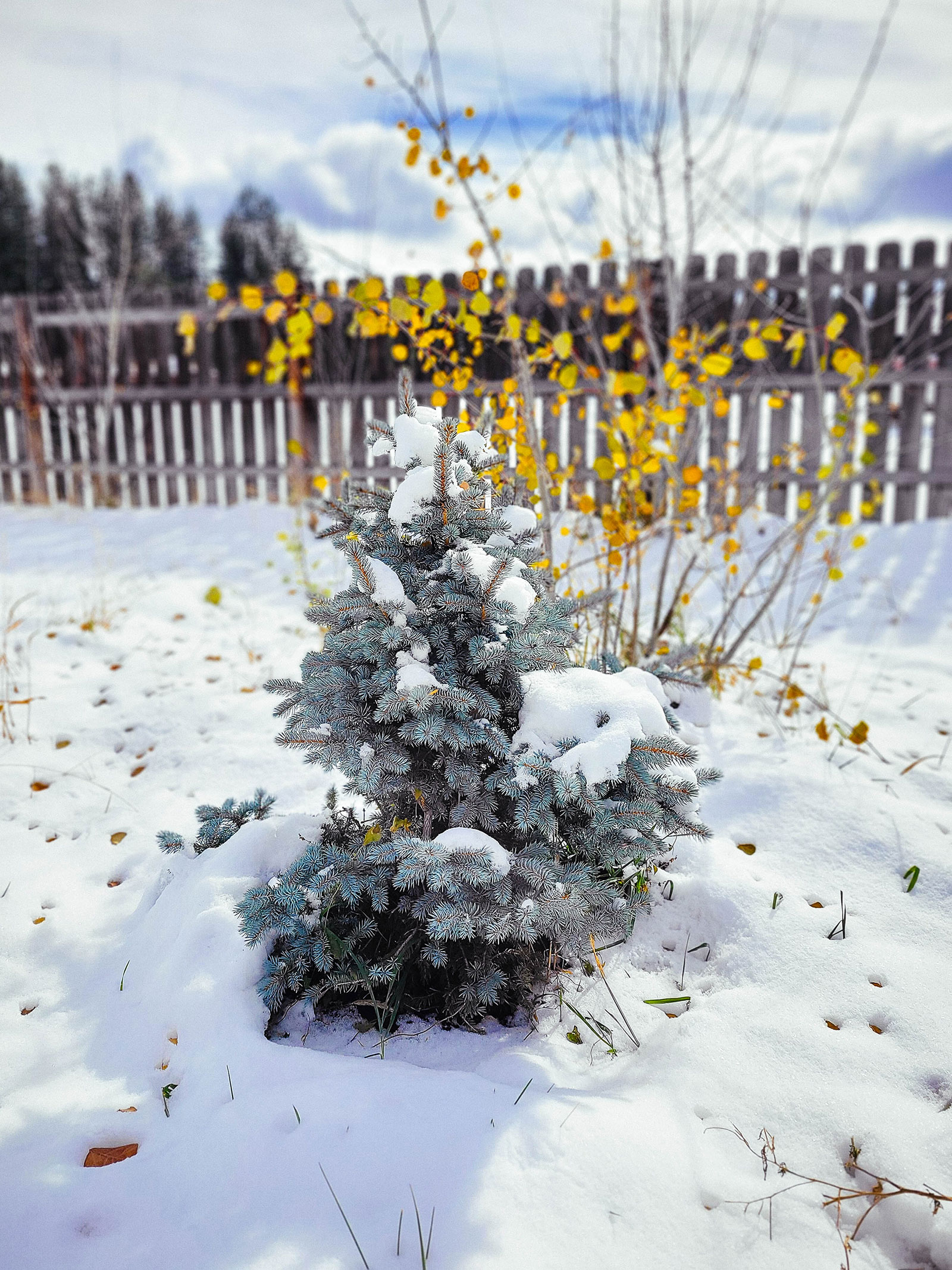
Spread a layer of organic mulch (like wood chips, shredded bark, or leaf litter) around the tree, taking care not to build up a “volcano” of mulch over the base of the trunk. Keep the mulch a few inches away from the trunk and give the tree plenty of water until its roots are established. Any new growth (light green, soft needles appearing on the tips of the branches) is a good sign that it will make it.
Can you repot a living Christmas tree?
Yes, you can repot a living Christmas tree after the holidays and keep it indoors as a houseplant. But it’s a challenge to keep it healthy this way since many homes don’t have the amount of light that conifers crave.
(Even Norfolk Island pines, which are popular houseplants, start to droop due to limited light. And while they grow more slowly than other conifers, they are trees, after all, and will eventually need more space.)
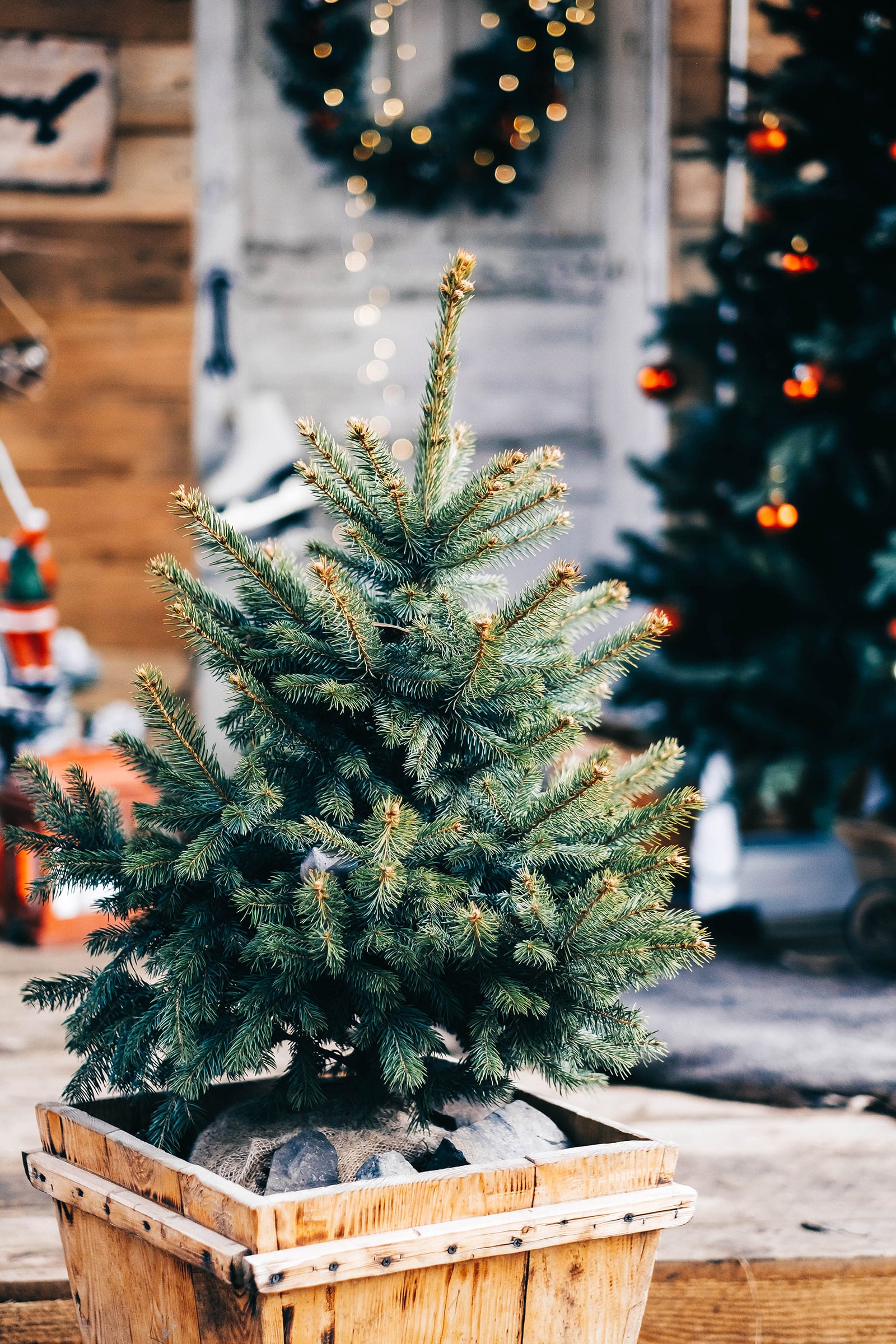
If you don’t want to plant your living Christmas tree in the ground, I suggest keeping it outdoors as a potted ornamental. This works best with miniature or dwarf conifers, since they grow slowly and won’t need to be repotted as often. You can bring it back inside for short stints during the holidays, but it’ll ultimately be happiest outside where it can soak up the sun.
This post updated from an article that originally appeared on September 20, 2022.


